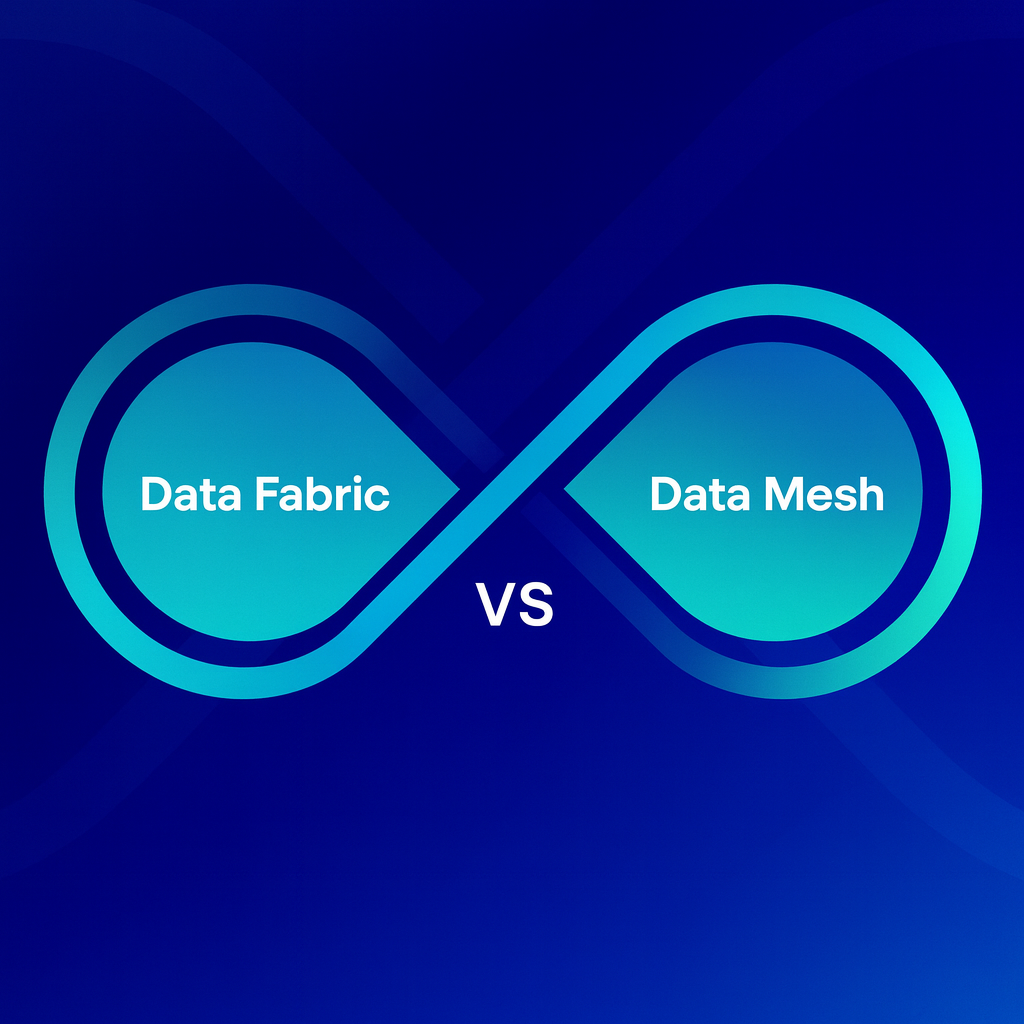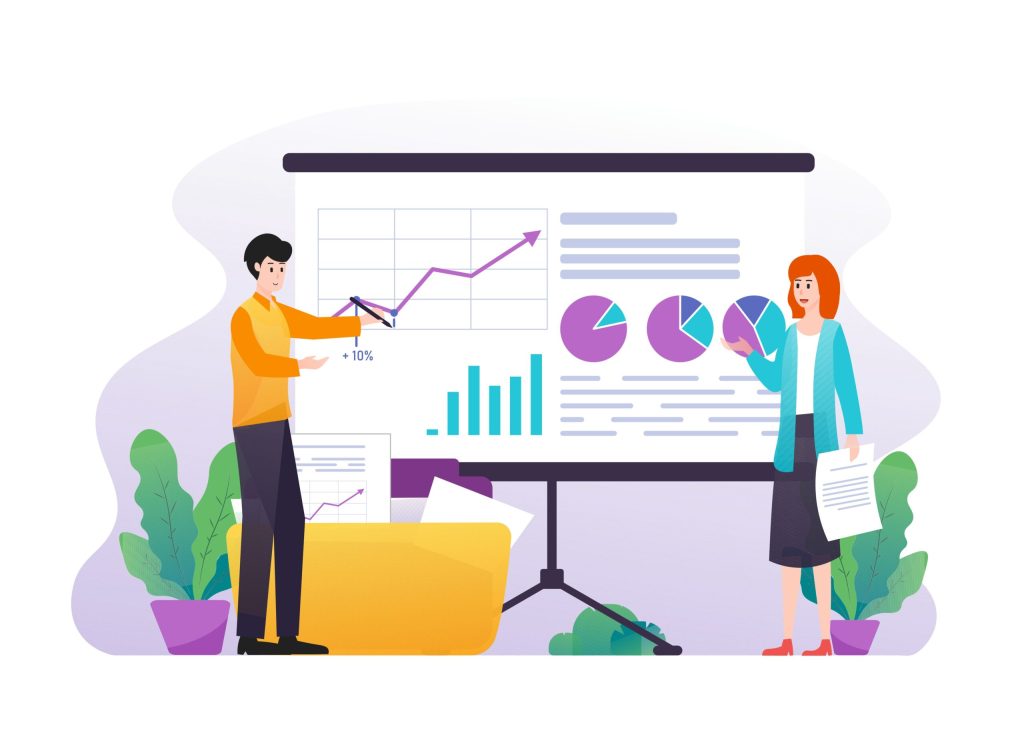Table of Contents
In a world overflowing with data, guessing is no longer good enough. Modern organizations are expected to make decisions that are faster, smarter, and backed by evidence. That’s why Predictive Modeling has become one of the most valuable tools for companies that want to turn data into action.
Every industry—from finance and healthcare to marketing and retail—is leaning on predictive models to understand what might happen next. Whether it’s forecasting demand, identifying customer churn, or detecting fraud, Predictive Modeling enables leaders to make informed choices that reduce risk and increase efficiency.
But what exactly is predictive modeling, and how can your business use it to gain a competitive advantage? Let’s explore how this secret weapon works and why it’s shaping the future of data-driven decision making.
What Is Predictive Modeling?
At its core, Predictive Modeling is a process that uses statistical algorithms and machine learning models to analyze historical data, identify patterns, and predict future outcomes. Instead of relying on assumptions or intuition, businesses use predictive models to base decisions on evidence.
These models combine the power of mathematics, statistics, and computer science to deliver insights that drive advanced data analysis. For example, a retailer can predict which products will sell next season, a hospital can anticipate patient admissions, and a bank can detect fraudulent activity in real time.
A Simple Example
Imagine an e-commerce company tracking thousands of transactions each day. Using predictive analytics, it can forecast which customers are most likely to buy again—or which ones might stop shopping altogether. This enables the company to act early, sending targeted offers that keep customers engaged.
That’s Predictive Modeling in action: using today’s data to shape tomorrow’s success.
Why Predictive Modeling Matters More Than Ever
In the era of big data, every decision counts. Companies that ignore predictive insights risk falling behind competitors who rely on them daily. Here’s why predictive modeling has become a cornerstone of smart business strategy:
1. Data Is Growing Faster Than Humans Can Process
Every second, the world generates massive amounts of data—from customer clicks to supply chain updates. Without automation and modeling, it’s impossible for humans to interpret all this information efficiently. Predictive Modeling filters the noise and highlights what matters most.
2. Businesses Need Precision
Intuition is useful, but it’s not reliable when millions of dollars are on the line. Predictive analytics empowers data-driven decision making, allowing leaders to see patterns invisible to the naked eye.
3. Competitive Advantage

3. Competitive Advantage
Predictive modeling helps businesses anticipate market shifts, adjust pricing, and respond to customer needs faster than competitors. In a dynamic economy, foresight equals power.
4. Risk Reduction
By identifying potential risks early—such as supply disruptions or credit defaults—companies can plan mitigation strategies before damage occurs.
Simply put, predictive modeling has evolved from a nice-to-have to a must-have.
How Predictive Modeling Works
While the math behind predictive modeling can get complex, the overall process is quite logical. Here’s how it unfolds step by step:
Data Collection – Gather historical and real-time data from multiple sources (sales, CRM, website analytics, IoT sensors, etc.).
Data Cleaning & Preparation – Remove duplicates, fill missing values, and standardize formats to ensure accuracy.
Model Selection – Choose the right machine learning model for the task—linear regression for numeric forecasting, decision trees for classification, or neural networks for deep insights.
Model Training – Feed historical data into the algorithm so it can recognize trends and relationships.
Testing & Validation – Compare predictions to known outcomes to measure accuracy.
Deployment – Apply the trained model to live data and start generating forecasts.
Once deployed, these models continuously learn and improve over time, making data-driven decision making more accurate and adaptive.
If you’d like to explore how we build and optimize such models for businesses, visit our services page.
Predictive Modeling in Action: Real-World Examples
Let’s look at how predictive modeling drives measurable results in various sectors:
Retail
Retailers use predictive analytics to forecast demand, personalize product recommendations, and manage inventory efficiently. By predicting customer buying behavior, stores can stock popular items before demand peaks—reducing waste and improving sales.
Healthcare
Hospitals and insurance companies use predictive modeling to forecast patient admissions, identify high-risk individuals, and allocate resources effectively. Machine learning models help detect early signs of diseases like diabetes or heart conditions, allowing preventive care.
Finance
Banks rely on advanced data analysis to assess creditworthiness, prevent fraud, and predict loan defaults. Predictive models can flag unusual spending patterns that indicate potential identity theft.
Manufacturing
Through predictive maintenance, manufacturers can foresee when equipment will fail, preventing costly downtime. This business forecasting improves operational efficiency and reduces maintenance expenses.
Marketing & Customer Experience
Predictive modeling enables hyper-personalization—predicting which messages, offers, or content will resonate most with each customer segment. This leads to higher engagement and retention rates.
A recent Harvard Business Review study found that companies using predictive analytics are five times more likely to make faster decisions than those that don’t. That’s a powerful endorsement of its value.
Predictive Modeling vs. Traditional Analytics
Traditional analytics looks backward—it helps explain what happened. Predictive Modeling, on the other hand, looks forward—it predicts what’s likely to happen next.
| Traditional Analytics | Predictive Modeling |
|---|---|
| Focuses on past performance | Focuses on future trends |
| Answers “What happened?” | Answers “What could happen?” |
| Descriptive reports | Forecasting and simulation |
| Static | Dynamic and evolving |
This shift from hindsight to foresight defines the new era of data-driven decision making.
Benefits of Predictive Modeling for Business Growth
Companies adopting Predictive Modeling quickly discover a long list of advantages:
Increased Efficiency: Streamlines operations and automates repetitive analysis.
Higher Profitability: Identifies revenue opportunities and cost-saving measures.
Customer Retention: Predicts churn and allows timely re-engagement.
Optimized Resource Allocation: Guides staffing, logistics, and budgeting with precision.
Smarter Strategy: Strengthens long-term planning through accurate business forecasting.
When you use predictive modeling as part of your strategy, you’re no longer reacting to change—you’re anticipating it.

Common Challenges (and How to Overcome Them)
While predictive modeling offers tremendous value, it’s not without challenges:
1. Poor Data Quality
Garbage in, garbage out. Low-quality data leads to unreliable predictions. Businesses must invest in advanced data analysis pipelines that ensure clean, consistent input.
2. Overfitting
A model might perform brilliantly on training data but fail on new inputs. Continuous testing and retraining are essential to maintain reliability.
3. Skill Gaps
Not every company has a team of data scientists. Partnering with experts in predictive analytics—like Engine Analytics—can bridge that gap.
4. Resistance to Change
Introducing predictive modeling often requires a cultural shift. Encourage teams to trust data insights alongside experience.
To find the right partner for your analytics journey, read our upcoming post: What Makes a Great Data Analytics Partner?.
Predictive Modeling and Machine Learning: The Perfect Pair
Machine learning models are the engine that powers predictive modeling. They continuously learn from new data and refine their predictions automatically. Some commonly used techniques include:
Regression Analysis: Ideal for numerical predictions (e.g., sales growth).
Decision Trees: Classifies outcomes based on various conditions.
Random Forests: Uses multiple decision trees for better accuracy.
Neural Networks: Mimics the human brain to detect deep patterns in large datasets.
With these tools, businesses can handle everything from business forecasting to real-time recommendation systems.
For an in-depth breakdown of the best analytics tools, check our upcoming blog: The Data Engineer’s Toolbox: Must-Have Tools for Seamless Analytics.
The Future of Predictive Modeling: AI Takes the Lead
As artificial intelligence advances, the future of Predictive Modeling looks incredibly bright. AI-driven predictive analytics systems can process unstructured data such as videos, text, and social media posts, providing even deeper insights.
By 2030, Gartner predicts that organizations using predictive analytics will outperform competitors that rely on intuition alone. The integration of AI with predictive modeling will enable businesses to move toward prescriptive analytics—not just predicting outcomes but recommending optimal actions automatically.
That’s where companies like Engine Analytics are focusing: helping businesses evolve from descriptive and predictive to prescriptive analytics for maximum impact.
Building a Predictive Modeling Strategy for Your Business
If you’re just starting your predictive analytics journey, here are key steps to set you up for success:
Define Clear Objectives – Know exactly what you want to predict: sales, churn, downtime, etc.
Collect Quality Data – Data must be relevant, accurate, and recent.
Start Small – Begin with one problem area before scaling across departments.
Choose the Right Tools – Select software that integrates with your existing systems.
Test, Measure, and Refine – Treat your predictive models as living systems that evolve with your business.
Work with Experts – Collaborating with specialists in advanced data analysis ensures you get reliable, actionable insights.
Conclusion: Transform Data Into Decisions That Drive the Future
We live in a world where data is no longer optional—it’s the foundation of every successful business decision. The difference between companies that thrive and those that struggle often comes down to one thing: how well they can turn information into foresight.
That’s where Predictive Modeling comes in. It bridges the gap between raw data and real-world decisions, empowering leaders to act on insights before challenges arise. With the right combination of predictive analytics, machine learning models, and advanced data analysis, organizations can forecast demand, reduce operational risks, and improve customer experiences with remarkable precision.
Think of predictive modeling as your company’s early warning system and growth accelerator rolled into one. It gives you the ability to anticipate trends before they become obvious, understand your customers better than your competitors, and make decisions backed by evidence instead of guesswork.
More importantly, predictive modeling builds resilience. Whether your business faces supply chain volatility, fluctuating market demand, or customer churn, predictive insights help you stay agile, confident, and ready to adapt. In today’s unpredictable economy, that’s not just valuable—it’s essential.
At Engine Analytics, we help businesses unlock this potential through tailored predictive modeling solutions. Our expertise lies in transforming your raw data into actionable intelligence that empowers every department—from sales and marketing to operations and finance—to make smarter choices, faster.
By combining data-driven decision making with future-ready business forecasting, we help you shift from reactive management to proactive leadership. Because when you can see what’s coming next, you can lead with certainty instead of following trends.
So, if you’re ready to make your business future-proof and data-smart, it’s time to take the next step.
? Contact us today to discover how predictive modeling can give your organization a competitive edge—one decision at a time.
Here’s Some Interesting FAQs for You
1. How accurate is Predictive Modeling?
The accuracy of Predictive Modeling depends heavily on the quality of your data, the sophistication of the machine learning models, and how often those models are updated. Clean, consistent, and well-structured data can drastically improve accuracy.
In many real-world applications—such as sales forecasting, fraud detection, and healthcare diagnostics—predictive models can achieve accuracy levels between 85% and 95%. However, this accuracy isn’t static; it improves over time as the system continues to learn from new data inputs through advanced data analysis.
For example, a retail company using predictive analytics to forecast demand may initially hit 80% accuracy. But as it collects more sales history, seasonal data, and customer behavior patterns, that figure can climb above 90%. The more diverse and high-quality your dataset, the more reliable your predictions will be.
The key takeaway: Predictive Modeling isn’t about perfection—it’s about improvement. With ongoing optimization and retraining, models become more intelligent and valuable to data-driven decision making.
2. Is Predictive Modeling expensive to implement?
Not at all. A decade ago, predictive modeling required massive servers and specialized software—making it accessible only to large enterprises. Today, cloud-based predictive analytics platforms like AWS, Google Cloud, and Microsoft Azure have made this technology affordable, scalable, and easy to deploy for businesses of all sizes.
Small and mid-sized companies can start with simple predictive models built on existing tools like Excel, Python, or Power BI. As their needs grow, they can scale up to machine learning models and automated pipelines without major upfront investment.
What’s more, many analytics partners (like Engine Analytics) offer end-to-end advanced data analysis services, meaning you don’t have to maintain your own infrastructure or hire a large technical team. You pay for results—not expensive hardware.
So whether you’re a startup trying to forecast sales or a manufacturer optimizing production, Predictive Modeling can fit nearly any budget. Think of it as an investment that quickly pays for itself through improved efficiency, reduced risk, and smarter business forecasting.
3. Can Predictive Modeling replace human decision-making?
No—and it shouldn’t. While Predictive Modeling offers powerful insights, it’s designed to enhance human decision-making, not replace it. Predictive models excel at identifying patterns, correlations, and probabilities across vast datasets—tasks humans can’t perform at scale. But they still lack context, ethics, and intuition.
For example, a machine learning model can predict which customers are likely to cancel their subscriptions. However, it takes human judgment to decide how to approach those customers, what tone to use in communication, and which retention strategy aligns with company values.
The smartest organizations use a hybrid approach: data provides the direction, and people provide the decision. This combination ensures that every strategic move is both data-driven and human-centered.
In short, Predictive Modeling amplifies human intelligence—it doesn’t replace it. It gives business leaders the confidence to act quickly, knowing that their decisions are backed by real-time data and statistical evidence, not guesswork.
The accuracy of Predictive Modeling depends heavily on the quality of your data, the sophistication of the machine learning models, and how often those models are updated. Clean, consistent, and well-structured data can drastically improve accuracy.
In many real-world applications—such as sales forecasting, fraud detection, and healthcare diagnostics—predictive models can achieve accuracy levels between 85% and 95%. However, this accuracy isn’t static; it improves over time as the system continues to learn from new data inputs through advanced data analysis.
For example, a retail company using predictive analytics to forecast demand may initially hit 80% accuracy. But as it collects more sales history, seasonal data, and customer behavior patterns, that figure can climb above 90%. The more diverse and high-quality your dataset, the more reliable your predictions will be.
The key takeaway: Predictive Modeling isn’t about perfection—it’s about improvement. With ongoing optimization and retraining, models become more intelligent and valuable to data-driven decision making.
Not at all. A decade ago, predictive modeling required massive servers and specialized software—making it accessible only to large enterprises. Today, cloud-based predictive analytics platforms like AWS, Google Cloud, and Microsoft Azure have made this technology affordable, scalable, and easy to deploy for businesses of all sizes.
Small and mid-sized companies can start with simple predictive models built on existing tools like Excel, Python, or Power BI. As their needs grow, they can scale up to machine learning models and automated pipelines without major upfront investment.
What’s more, many analytics partners (like Engine Analytics) offer end-to-end advanced data analysis services, meaning you don’t have to maintain your own infrastructure or hire a large technical team. You pay for results—not expensive hardware.
So whether you’re a startup trying to forecast sales or a manufacturer optimizing production, Predictive Modeling can fit nearly any budget. Think of it as an investment that quickly pays for itself through improved efficiency, reduced risk, and smarter business forecasting.
No—and it shouldn’t. While Predictive Modeling offers powerful insights, it’s designed to enhance human decision-making, not replace it. Predictive models excel at identifying patterns, correlations, and probabilities across vast datasets—tasks humans can’t perform at scale. But they still lack context, ethics, and intuition.
For example, a machine learning model can predict which customers are likely to cancel their subscriptions. However, it takes human judgment to decide how to approach those customers, what tone to use in communication, and which retention strategy aligns with company values.
The smartest organizations use a hybrid approach: data provides the direction, and people provide the decision. This combination ensures that every strategic move is both data-driven and human-centered.
In short, Predictive Modeling amplifies human intelligence—it doesn’t replace it. It gives business leaders the confidence to act quickly, knowing that their decisions are backed by real-time data and statistical evidence, not guesswork.







